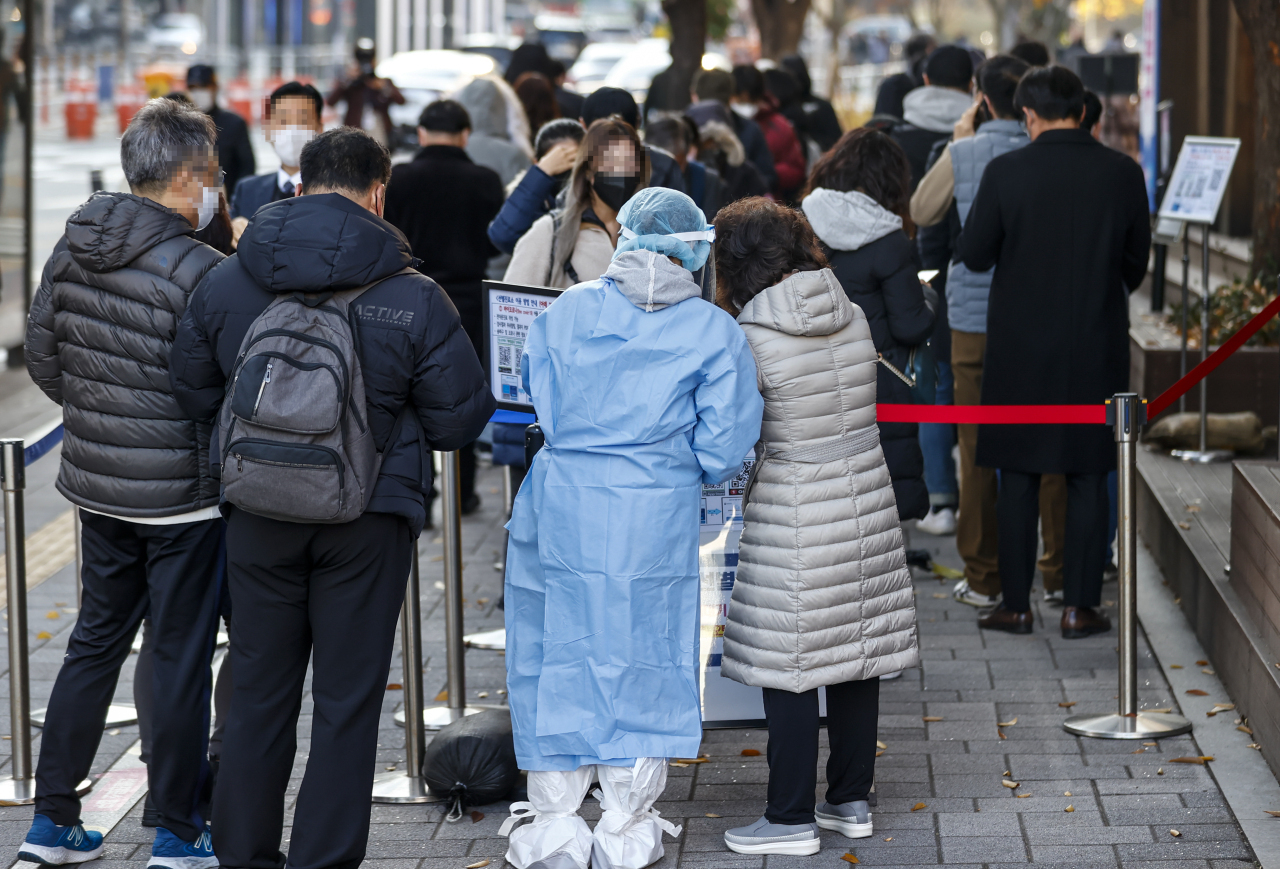 |
People stand in line to receive coronavirus tests at a screening clinic in southeastern Seoul on Wednesday. (Yonhap) |
South Korea saw the highest number of new COVID-19 cases since the start of the pandemic Thursday, just 17 days into its return to normal scheme.
The Korea Disease Control and Prevention Agency said 3,292 cases were registered in the preceding 24 hours, exceeding the 3,000 mark for the second day in a row. The previous one-day record was 3,270 cases on Sept. 25, in the aftermath of Chuseok holiday season.
The new all-time high comes as the country takes its first step toward normal life, with restrictions such as nighttime curfews on risky places having been lifted Nov. 1. The next stage of the road map out of the pandemic is slated for mid-December, when larger public gatherings will be permitted.
While the Ministry of Health and Welfare had previously said the country’s health care systems could handle up to 5,000 cases a day without scrambling, beds are running out at much lower case rates. Over the past two weeks, 2,353 cases were found per day on average.
The ministry data showed more than 80 percent of intensive care beds were occupied at Seoul hospitals by Wednesday afternoon. In neighboring Gyeonggi Province and Daejeon, intensive care beds were up to 76 percent full, surpassing the threshold of 75 percent for triggering an emergency response.
The Korean Society of Critical Care Medicine said in a statement Thursday called for a central system for transporting critically sick patients safely and quickly as more hospitals run short of beds. The ministry said it was not keeping an official tally of COVID-19 patients who have had to travel on ambulances to find open beds when hospitals in the region have no space.
The society pointed out about a quarter of all beds at intensive care wards at some of the largest hospitals had been reserved to treat COVID-19 patients as the country returns to normal.
The society said by diverting the limited resources to COVID-19 care, non-COVID-19 patients with similarly life-threatening conditions were being put at risk, calling for measures to minimize the damage for patients without COVID-19 who require critical care.
Prime Minister Kim Boo-kyum, leading Moon Jae-in administration’s COVID-19 response, said he would be speaking with directors of hospitals in Seoul area Friday to come up with measures to expand critical care surge capacity, in a second such meeting to be held this week.
But even as COVID-19 patients fill hospitals, Son Young-rae, Ministry of Health and Welfare spokesperson, reaffirmed Korea won’t be bringing social distancing back. He said the 75 percent bed occupancy rate nationwide -- the limit the ministry set to trigger the emergency plan -- would buy the country time before reaching full occupancy.
Son said in response to press inquiries that he was aware of some patients being denied hospital care amid shortages, but that as they wait to be admitted to hospitals, they were instead being monitored remotely by district officials to ensure safety.
“The idea of life returning to normal is not about reducing the overall patient load. It’s about shifting the burden to health care systems while social and economic restrictions are eased,” he said.
By Kim Arin (
arin@heraldcorp.com)








